(By Stephanie Hiller) “Who controls the food supply controls the people; who controls the energy can control whole continents; who controls money can control the world.”
— Henry Kissinger
“Local” has become a buzzword. Even the Sonoma Chamber of Commerce has taken the acronym as its motto. We all know it’s better to shop locally, and a burgeoning grassroots movement has sprung up around the idea. But what does it really represent?
A little history may help. When I was growing up in the 1950s, the A&P supermarket had just been installed in the new shopping center down the street from our “garden apartment” in Tarrytown, New York. Begun as the Atlantic and Pacific Tea Company in 1859 by George Huntington Hartford and George Gilman, the A&P became the first national supermarket chain, and changed the way we ate. Meat now came wrapped in cellophane; Wonder Bread replaced the round hard pumpernickel my mom once bought at the bakery on Tremont Avenue in New York City; TV dinners arrived; and while the variety of foods expanded, quality declined.
Flash forward 50 years. Real food has returned, but now it’s in its own niche category. Alerted to the health consequences of pesticides and the advent of genetically modified foods, consumers have flocked to organically grown foods. Once a boutique market, organic farming has demonstrated that acre for acre it can produce more food than factory farming. Sales keep going up; the 2014 Organic Survey found that consumer spending on organics increased by 72 percent in just six years.
We’ve been going local, drawn in by the charm, the color and the freshness of buying food from real people whom you meet on their farms or at the farm markets or whose products are beginning to line the shelves of some of our markets. Sonoma Market’s Assistant Manager Stacia Rodden estimates that 10 percent of the produce sold at this local grocery is local, and 20 percent of other products, including locally made biscotti, humus, cheese, eggs, and meat.”
“And if there were more of it, we would buy it,” she said.
The market even purchased the animals shown by kids from the Future Farmers of America and Sonoma High. They were butchered at the market. Now that’s local.
But beyond the charm, and even the taste and the flavor of fresh food, by being willing to spend a little more for it we are making a statement that has significant political and economic implications. We’re trying to take back our power here.
In a society that has been overridden and overruled by powerful conglomerates that buy up national chains often without changing the names of the stores, whose political lobbies exert undue influence in Congress, we, the little people, who are simply trying to survive, have realized that our buying habits, our dollar, and, more importantly, the culture we embrace in our lives, has clout.
For starters, shopping locally improves the local economy. Money spent here stays here; instead of traveling far away to corporate coffers in, perhaps, the Cayman Islands, these dollars double their buying power. When those dollars are put into a local bank or credit union, they provide investment capital for local startups.
That enhances community resilience. Social networks are reinforced, building community, the strongest hedge against shocks that may occur down the line, including an earthquake that disables the Golden Gate Bridge, flooding that makes roads impassable, an economic collapse like the one of 2008 that cannot be quickly remedied, even a terrorist attack.
But it’s climate change that has literally put the heat on. Buying foods grown a thousand miles away dramatically raises the carbon footprint, and really, who needs raspberries from Chile in January?
Paul Wirtz of Paul’s Produce grows a variety of produce on his leased 14-acres on Arnold Road. His farm’s contribution to greenhouse gases is very small; he makes his living selling produce to Sonoma Market, the farmers’ markets, and his produce stand. And it’s enough, “so long as nobody gets sick.”
“Our two trucks log about 1000 miles per year,” he told me as we watched the first rain falling outside his tidy tool shed. For him, the biggest reward of organic farming is the way it protects the earth.” Asked how we can help, Paul said that shopping regularly – he emphasized regularly – with the same farmers is the best way.
Coping with climate change, with its accompanying drought and other types of extreme weather events (as storms are now called), is directly related to the economy. Naomi Klein threw down the gauntlet when she said in her latest book, “This Changes Everything,” that capitalism is why we have failed to take significant action to arrest climate change. Richard Heinberg of the Post Carbon Institute in Santa Rosa agrees completely. The issue is growth, the constant expansion of the economy to accommodate the greed of stockholders, CEOs and consumers urged to accumulate endless junk.
“Capitalism is predatory,” said former mayor Larry Barnett. Even with our refusal to allow chains like McDonald’s to move to the Plaza, or “big box” stores like Walmart to be built here, “the money is moving out of town, siphoning off the wealth of the community into corporate hands. I think that’s a legitimate concern.”
In this light, localism appears as more than a fad; it’s a movement in response to this loss of capital, which has come to symbolize loss of personal power in a world run increasingly by oligarchs on Wall Street who don’t care about us locals.
The new localism declares that if we may not be able to change City Hall, we can engulf it with a new culture, one that puts people first over profit. “It comes down to a sharing economy versus a profit driven one,” said Barnett. “But the idea of removing the profit motive as the central engine of social life is radical. It requires the undoing of everything.” He believes it can be done. “I think it’s possible to imagine a society that is not built around the predatory engine,” but in his view, that depth of change requires a spiritual shift. “To bring spiritualities to bear on this problem, that is the great work.”
The kinds of changes envisioned by proponents of a new economy centered in local networks go deep into the fabric of our society. Organizations are popping up all over the country to handle legal issues, localize investment, support a decent minimum wage, defend racial justice and restore the earth.
On the weekend of October 10, representatives of dozens of these groups met at a Convergence held at the Solar Institute in Hopland. Theirs is no small agenda, but the energy and creativity they bring to it is thrilling. And, it is young. Many of our farmers, local retailers and activists are in their 30s and 40s. They are inspired by permaculture, applying its whole-system, ecological approach to social organizations as well as gardens and urban forests. Networks, not hierarchies, are their modus operandi.
Some refused to tackle climate change head-on. Trathen Heckman, an articulate spokesman for this movement who runs Daily Acts, a nonprofit in Petaluma, believes in the “Ghandian be-the-change-you-want-to-see” and by so doing, inspire others to do the same.
Andrea Davis-Cetina runs Quarter Acre Farm on leased property off Arnold Road. She also has a radio show on KSVY available via podcast. Asked about global warming, Andrea said, “For my whole life the norm has been that climate change is going on and no one is addressing it. Resilience means focusing on the little bit you can do. If everyone spent $5 a week at a farm or farm market, it would make a huge difference.” The biggest hurdle for small farms is lack of access to land, which she blames in part on the wine industry.
Ag Commissioner Tony Linegar agrees. Wine grape production and wineries now occupy 63,000 acres of arable land in Sonoma County, he said, while vegetables take up 535 acres. No wonder the County only produces about two percent of the fruits and vegetables we consume. He is working on securing public lands for use by young farmers, he said.
Linegar doubts we’ll ever grow enough food to feed everyone in the county, especially considering the 40 percent population growth of the past 20 years. But we could certainly grow more. To achieve greater food security, his advice is, “Grow your own!”
Fred Allebach, a local housepainter who might be called an armchair sociologist, says he wouldn’t mind going to a barter system and trading his skills for fresh organic food which he feels he can’t afford at the farmers’ market, but that could only work if the county agreed to suspend its web of expensive permits and tax supported oversight agencies.
If local economy means going back to the way Sonoma functioned 100 years ago, then yes, life would become more primitive. Would it be back to the outhouse in the back yard?
Hopefully not. There seem to be enough alternatives on the drawing board for changing the way we do business so that our communities can be more self-sufficient, more resilient, and more cooperative. We’ll look at some of those next time.

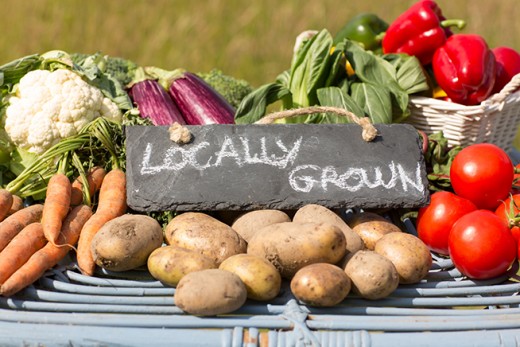


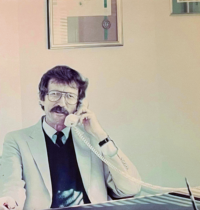

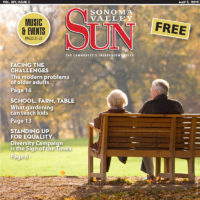
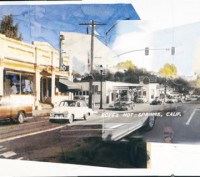

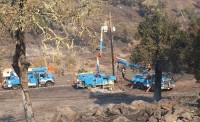
Be First to Comment